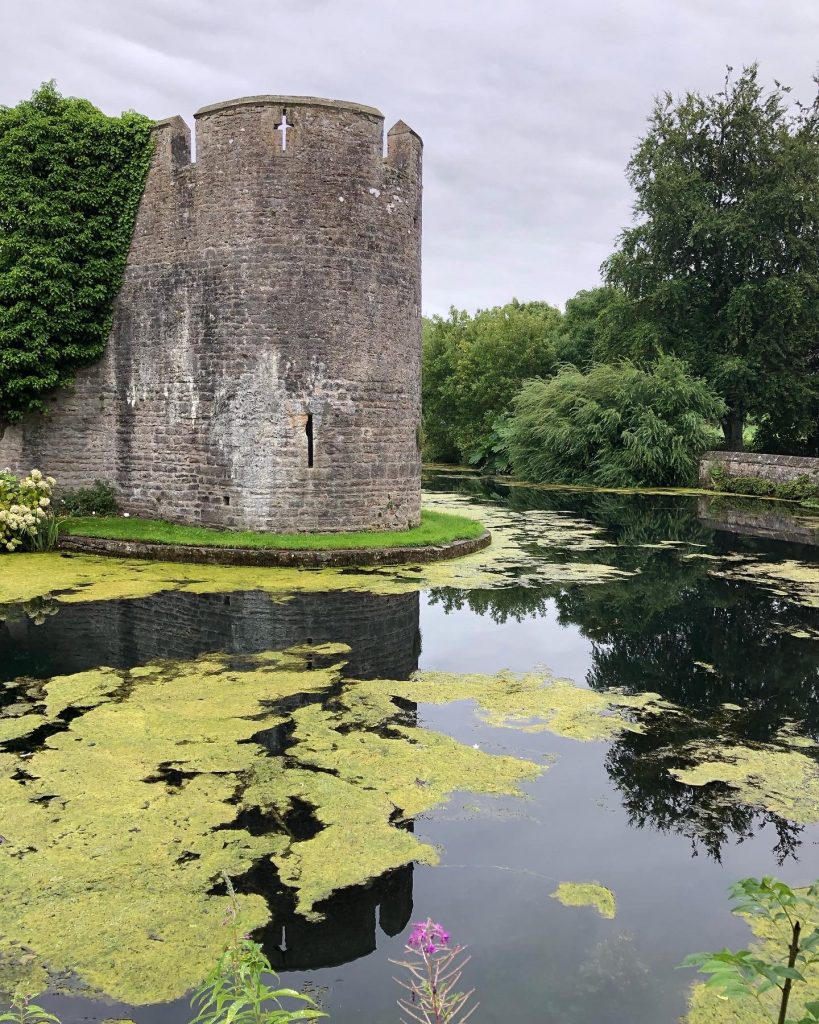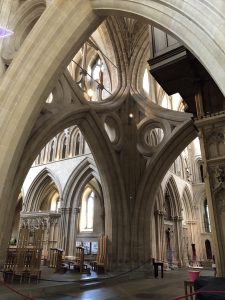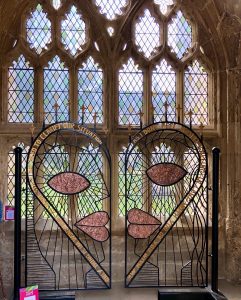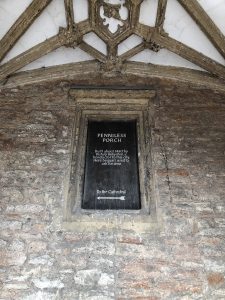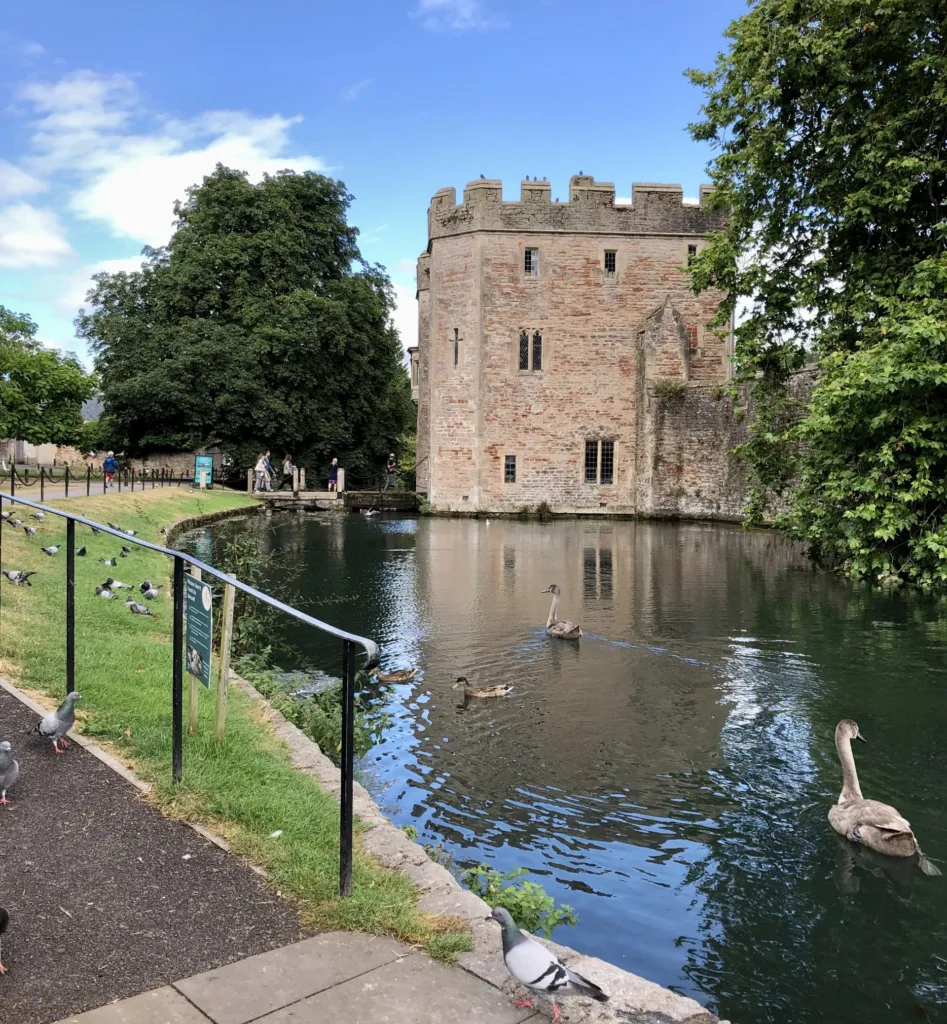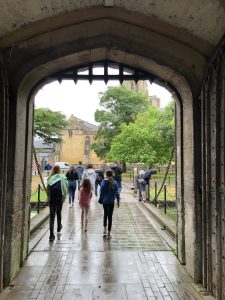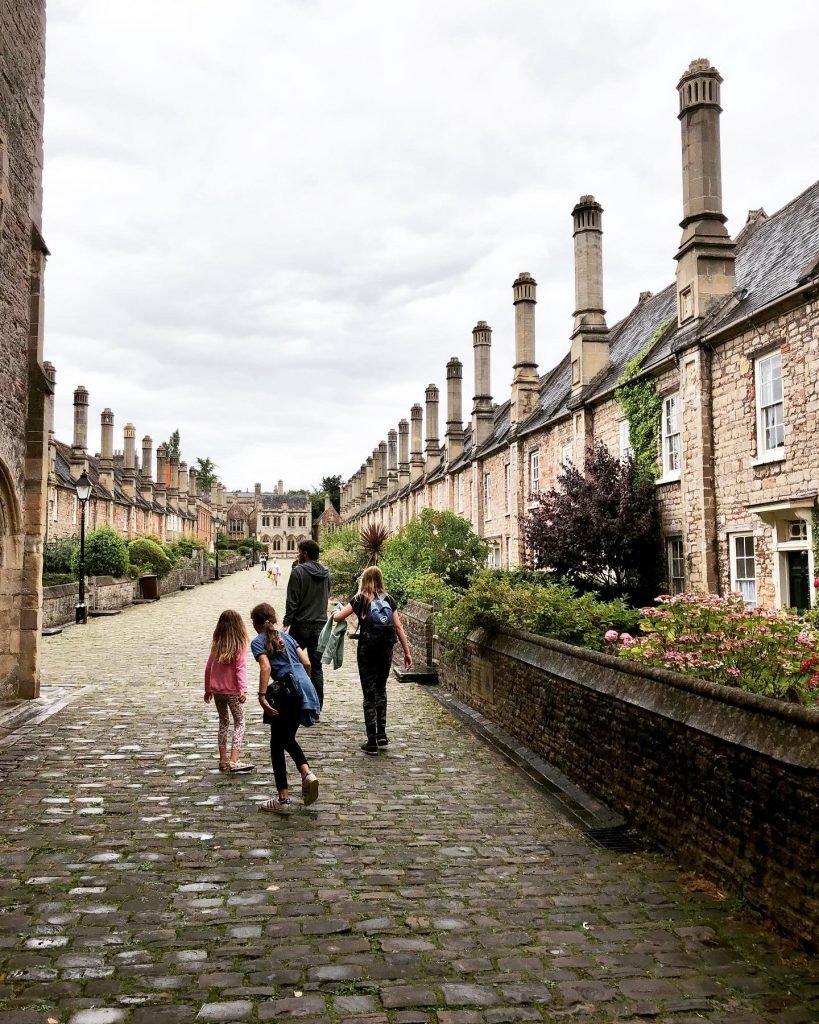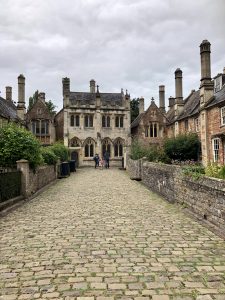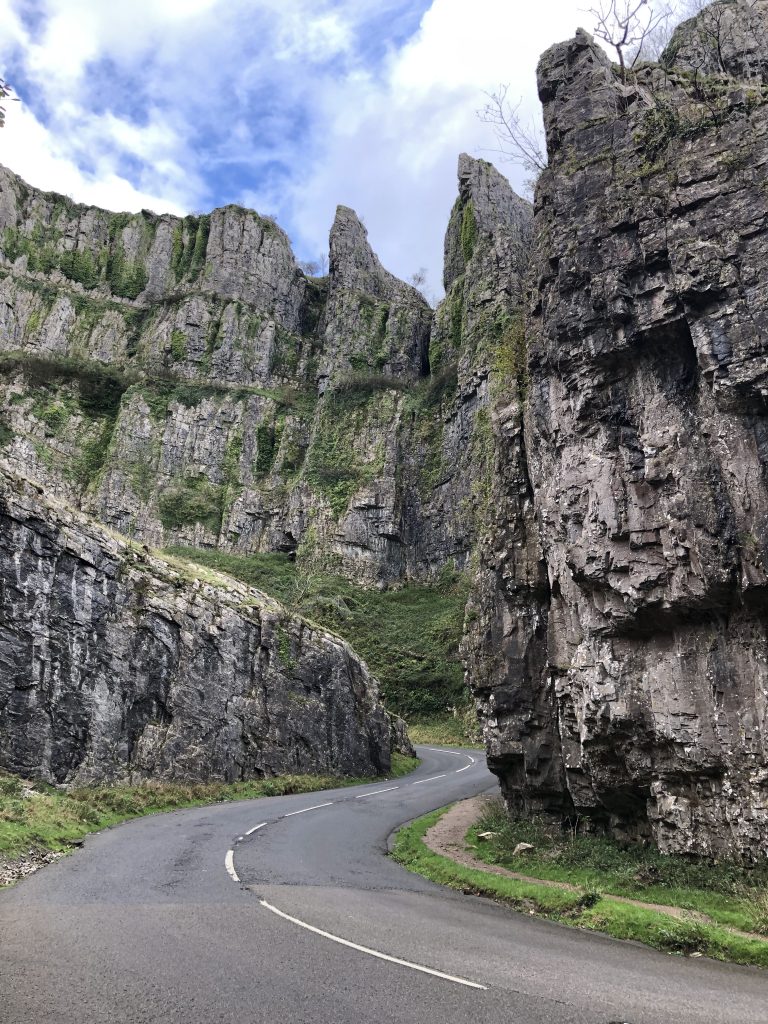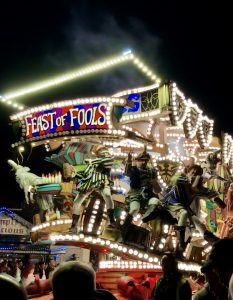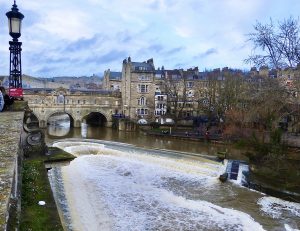Table of Contents - Tap to jump to a section
ToggleThe Ultimate Guide to Visiting Wells with Kids
Are you planning a trip to Somerset? If so, we think you should include the historic city of Wells to your itinerary. It is a little gem, with cobbled streets and lots of Medieval buildings to explore. Wells has a lot to offer families looking for a day out or weekend away and can be combined with trips to nearby Bath, Glastonbury and Bristol. You and your kids have plenty of reasons to visit Wells, with tales of dragons and witches, bell-ringing swans, historic buildings and even a drawbridge to walk over the moat. There is lots to capture the interest of all ages and we think Wells is worth visiting.
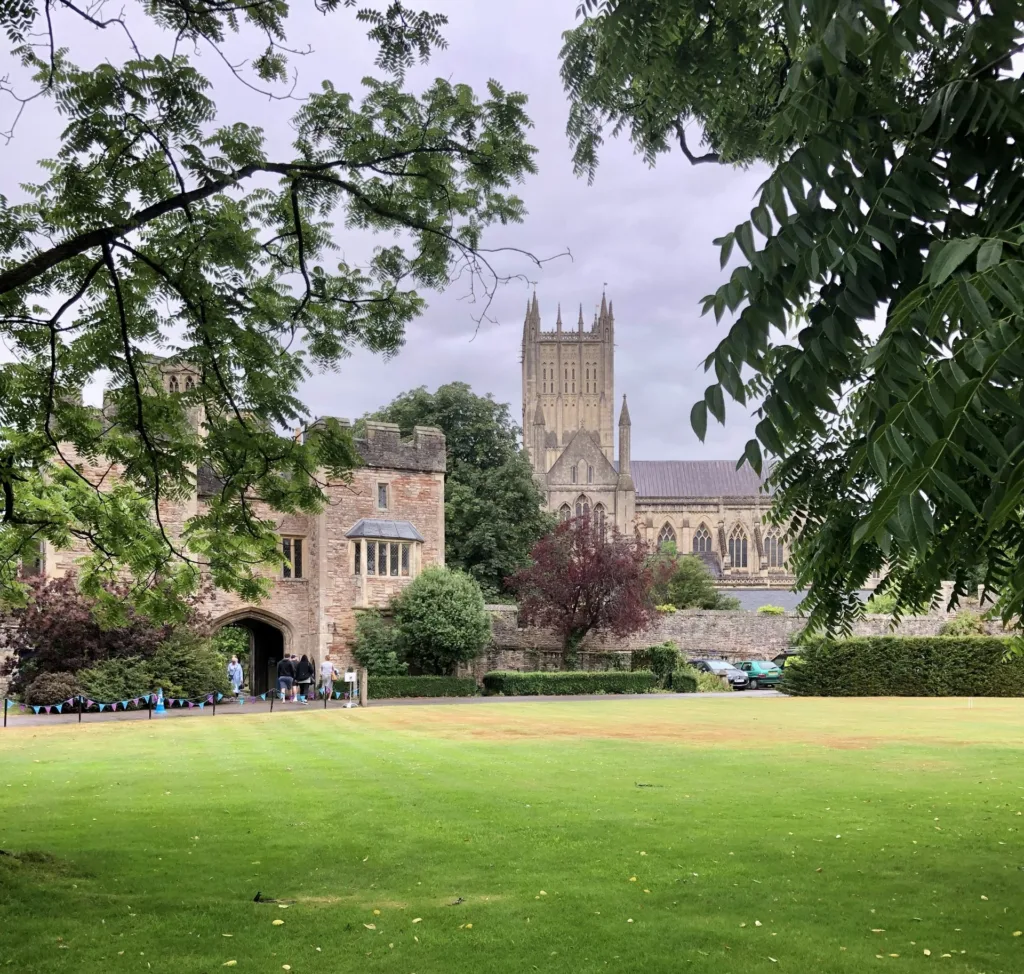
As a family living in Somerset, we are so lucky to have these fabulous places on our doorstep. We visited Wells mid-week in the school summer holidays and we were pleasantly surprised that it wasn’t crowded with visitors at all. We were able to see all the main sights in one day.
Here is our guide to visiting Wells in Somerset with kids.
Why Visit Wells?

You must visit Wells because we think it is one of the most beautiful cities in England.
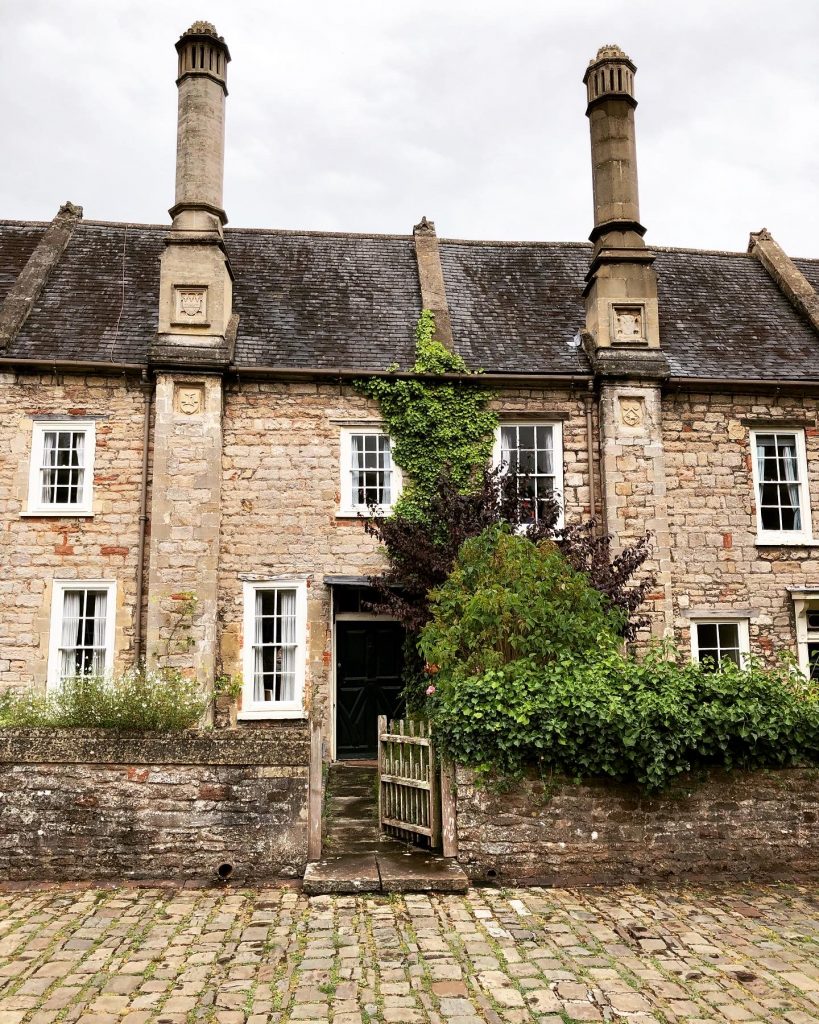
With its historic, Medieval buildings it is like stepping back in time. It isn’t as touristy as the nearby city of Bath, but equally as pretty.
You may recognise locations around the city from the film Hot Fuzz, which was mostly filmed in Wells – it is the director, Edgar Wright’s childhood home town.
About Wells, Somerset
Wells was aptly named after three natural springs, or wells, which are located in the city: two in the grounds of the Bishop’s Palace and the other in the market square.
The springs flow into the moat of the Bishop’s Palace. The presence of these springs is a likely reason why the Romans first settled here.
Later, around 705AD, the first Saxon church was built and in 909 Athelm, the first Bishop of Wells made it his Cathedral. By 1150 it was deemed too small and by 1175 the building of the present Cathedral began in the Early-English Gothic style.
Did you know? Wells is England’s smallest city. If you discount the city of London, Wells is the smallest city in population and size. This is one of the many benefits of visiting Wells because it means that all the sights are within walking distance of each other. This is ideal especially if you are visiting with children.
Wells is located at the edge of the Mendip Hills, an area of Outstanding Natural Beauty (AONB). There are lots of lovely walking routes nearby. The Mendip Way path goes through Wells: to Frome in one direction (East Mendip Way) and Weston-super-Mare in the other direction (West Mendip Way). There is a plaque at The Wells and Mendip Museum to mark where the two routes meet.
Things to see and do in Wells, Somerset
1. Visit Wells Cathedral
The highlight of Wells is the awesome Gothic Cathedral. Built between 1175 and 1450, this grade 1 listed building dominates the city. This is where we headed first. As we walked through the archway on Sadler Street leading to Cathedral Green, we had our first glimpse of the famous west front. Its sheer size and ornate facade is impressive.
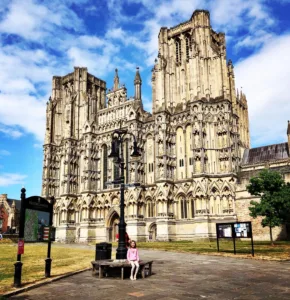
The Cathedral’s magnificent West Front has more than 300 medieval sculptures carved into it. Initially it was built as a Roman Catholic place of worship but became an Anglican Cathedral when King Henry VIII split from Rome in 1534.
The interior is just as impressive with a collection of Medieval stained-glass windows (c.1340), Scissor Arches (1338-48), the Chapter House (1306) and more ornate carvings.
You may be lucky to visit during choir practice. The choir were in full swing during our visit which sounded incredible.
Wells Cathedral claims to have the world’s oldest working clock. It was built between 1386 and 1392 according to surviving records. There are two dials: an astronomical clock on the inside and the other on the outside of the Cathedral. Every 15 minutes the jousting knights gallop around the turret just above the clock face. The outside dial was added later in about the 14th or 15th century. This has two knights above it that ring the bells.
Up a stone spiral staircase, you will find a chained library. Here you will see centuries old leather-bound books that are attached to the shelves with metal chains. Built in the 1450’s, it houses books printed before 1800 including the earliest complete atlas of the world. The library looked like something straight out of Hogwarts!
Is Wells Cathedral free to enter?
Wells Cathedral is free to enter, however, visitors are encouraged to make a donation.
Daily tours are available and can be booked and paid online. The Cathedral also hosts events including concerts and exhibitions. When we visited there was an art exhibition in the Cloisters.
You can find out the latest events and the opening times by clicking here.
2. Walk Around Wells Market Place
Through The Penniless Porch (named from the beggars who asked for alms), brings you out into the busy Market Square.
As it was Wednesday, the Wells Outdoor Market was in full swing. Market day is twice a week throughout the year on Wednesday and Saturday. It has been running for centuries and you can pick up fruit, vegetables, jewellery, flowers and local artisan crafts.
There are quaint shops and cafes with outdoor seating along the west side, and a Georgian Town Hall (1779) on the East side. Sit down and soak up the atmosphere. You may recognise the Market Square as it has been used as a location for films such as Hot Fuzz.
The Market Place is overlooked by The Bishop’s Eye, a grand entrance gate with four turrets, dating back to 1450.
3. Explore Bishop’s Palace and Gardens
Next to the Cathedral and Market Square is the equally impressive Bishop’s Palace. It’s been home to the Bishop of Bath and Wells for over 800 years. We walked through the archway under The Bishop’s Eye.
The first thing you notice is that it’s surrounded by an imposing wall and moat.
The moat is home to a variety of birds, most notably a family of swans. These swans are famous for ringing a bell next to the drawbridge when they want food. This dates back to the 1850’s when it was thought that the bishop’s daughter first taught them to ring the bell at the Gatehouse for food. When we visited in August, there were six cygnets and an adult swan.
Crossing the drawbridge
Bishop’s Palace is reached by crossing a drawbridge at the Gatehouse which the children loved. Over the drawbridge next to the croquet lawn is a café with indoor and outdoor seating. This is an ideal place for a food stop. Or you can bring a picnic blanket (like we did) and enjoy lunch on the grass next to the moat. There are plenty of benches along the path next to the moat as well.
Inside, you can visit palace buildings, the chapel with an impressive vaulted ceiling and ruins of the Great Hall.
There are 14 acres of gardens to explore including an arboretum, herb garden and the beautiful well pools from which Wells takes its name.
For more information and current prices click here.
There are often events for children in the school holidays such as a Family Crafting, Treasure Hunt Trail and Family Story Telling.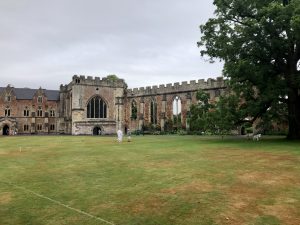
For further information click here.
Before you leave, climb the steps to the left of the drawbridge which takes you up to the top of the rampart. The view from the top over the moat is worth the short climb.
Afterwards, take a stroll around the defensive moat.
Keep your eyes peeled for a dragon mosaic set back in the grass. The mosaic was made by local children in 2001.
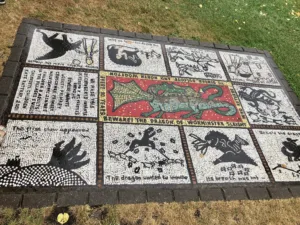
This tells the story of the dragon that terrorised locals during the 13th century (it loved eating children and sheep!). The tale says it was slayed by Bishop Jocelyn, but not before it had warned that if it was not honoured every 50 years, it would come back to life.
Click here for some walking routes starting from The Bishop’s Palace.
4. Visit Vicar’s Close
Do you want to see the most enchanting Medieval Street in England?
Vicar’s Close is thought to be the oldest purely residential Street in Europe 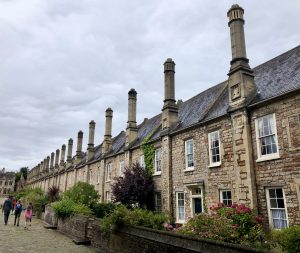 with original buildings surviving intact. Located just a short walk from the Cathedral, it was built in the 14th Century to house the Cathedrals Choir. To this day, Vicar’s Close is still home to the Vicar’s Choir, bellringers, organists, students and vergers who serve the Cathedral.
with original buildings surviving intact. Located just a short walk from the Cathedral, it was built in the 14th Century to house the Cathedrals Choir. To this day, Vicar’s Close is still home to the Vicar’s Choir, bellringers, organists, students and vergers who serve the Cathedral.
Despite being about 650 years old, the houses are well preserved and have changed very little. Chimneys were renewed and raised in the 15th Century when coal rather than wood was used as fuel. Garden walls were also added during this time. The cobbled street is one of the most photographed places in Wells. Walking along Vicar’s Close is like stepping back in time.
Visiting Vicar’s Close
You enter Vicar’s Close from Cathedral Green and St. Andrew’s Street through an arched gateway. This gateway, with Vicar’s Hall above, was one of the first buildings to be constructed in the close in 1348. This communal area was where the Vicars would eat together.
Originally, there were 42 houses built as single occupancy which were completed in 1363. However, in the 15th Century when clergymen were permitted to marry as part of the Reformation, some of the houses were knocked through to make room for families. Today, there are 27 residential homes. Number 22 is the house which has most of its original Medieval structure.
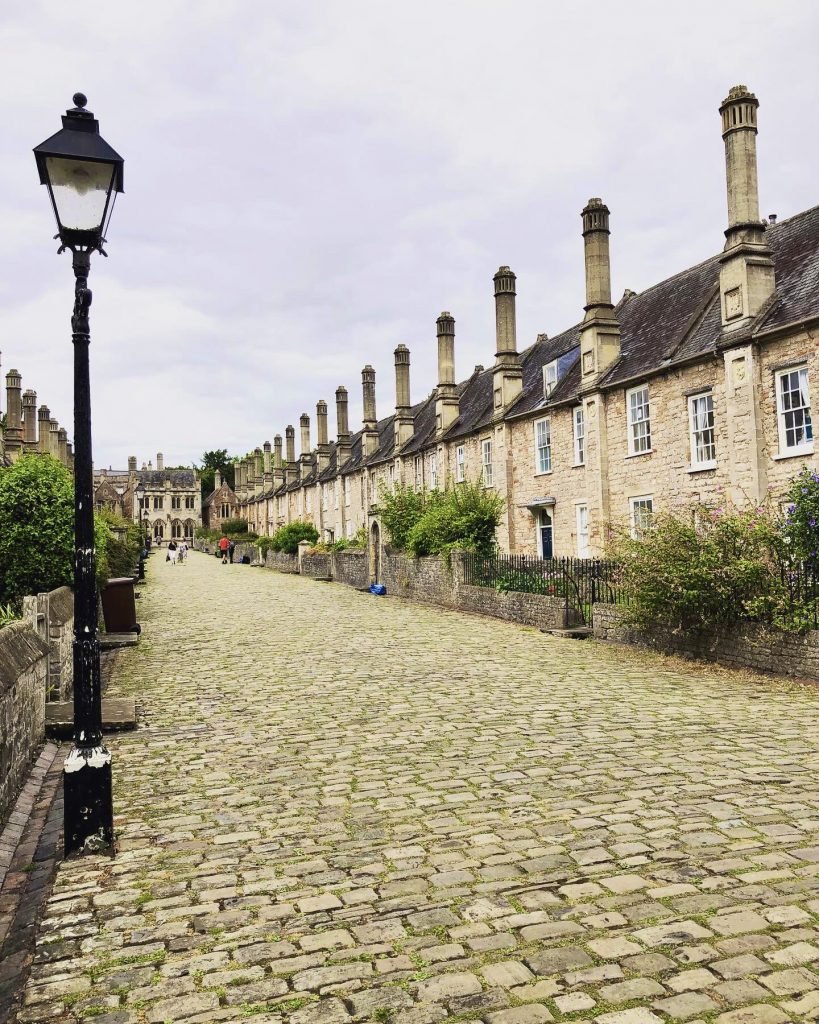
There are plans to open up two houses on Vicar’s Close as interpretation centres. This will enable them to share their rich history with the public. It will be so interesting to see what they look like inside. Wells Cathedral have won a grant from the national Lottery Heritage Fund to enable this project to happen, as well as creating access to Vicar’s Hall and Treasury rooms.
At the far end of the street, a chapel was built between 1424 and 1430. The top floor of the chapel was a library accessed by a spiral staircase.
When to visit Vicar’s Close
I would suggest visiting Vicar’s Close early morning when there are less tourists to get the best photographs. Vicar’s Close makes for an incredible Instagram location. From the north end of the street there is a spectacular view looking back towards the Cathedral.
Vicar’s Close (BA5 2UH) is free to visit.
5. Visit Wells and Mendip Museum
You can learn more about the local history, archaeology, natural history and geology of Wells and surrounding area at the Wells and Mendip Museum. The museum was founded in 1893 by Herbert Balch who was a Victorian collector and famous geologist. It is situated next to Wells Cathedral at 8, Cathedral Green.
Divided over two floors, the museum houses Victorian collections, photographs, fossils, a skeleton found in the Wookey Hole Caves and other interesting artefacts. There is a programme of events for the whole family, click here to see what’s on.
6. Cheddar Gorge and Caves
You can’t visit Wells without a trip to Cheddar Gorge and Caves which is about 9 miles from the City of Wells. You can spend a whole day here exploring the caves, museum, walking the cliff-top, and wandering around the quaint village of Cheddar. Or, if you don’t have time, just driving through the gorge is a must-do.
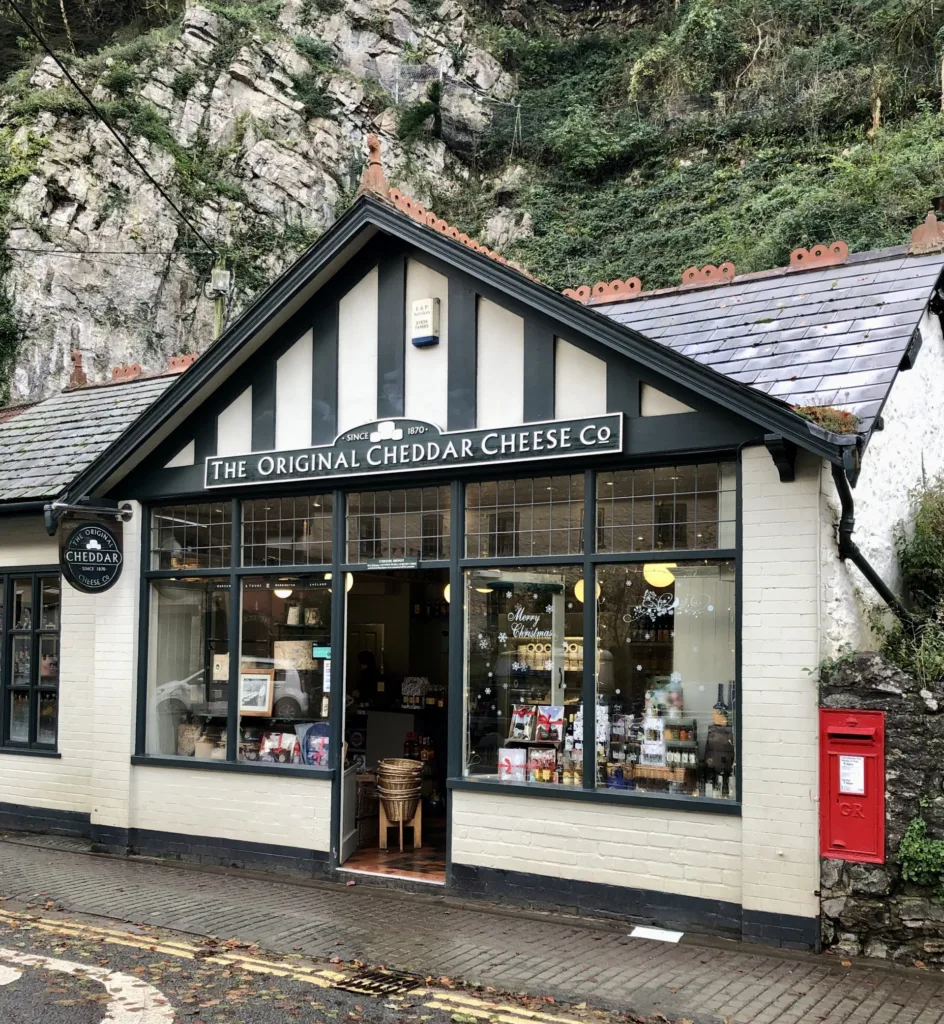
Cheddar is home to the famous Cheddar cheese and you can watch it being made.
Cheddar Gorge, in the Mendip Hills, is one of England’s most spectacular landmarks. It is the highest inland limestone gorge in Britain at almost 400 ft deep. A drive through here is fantastic and a hike to the top is even better. There is plenty of wildlife in this area of Outstanding Natural Beauty, including Peregrine Falcons, Kestrels and Buzzards. If you visit in June or July, you may be lucky to spot the Cheddar Pink – a pretty flower that is only found growing on the limestone rocks of the Mendip Hills. Also, keep your eyes peeled for a herd of goats grazing the cliff edge.
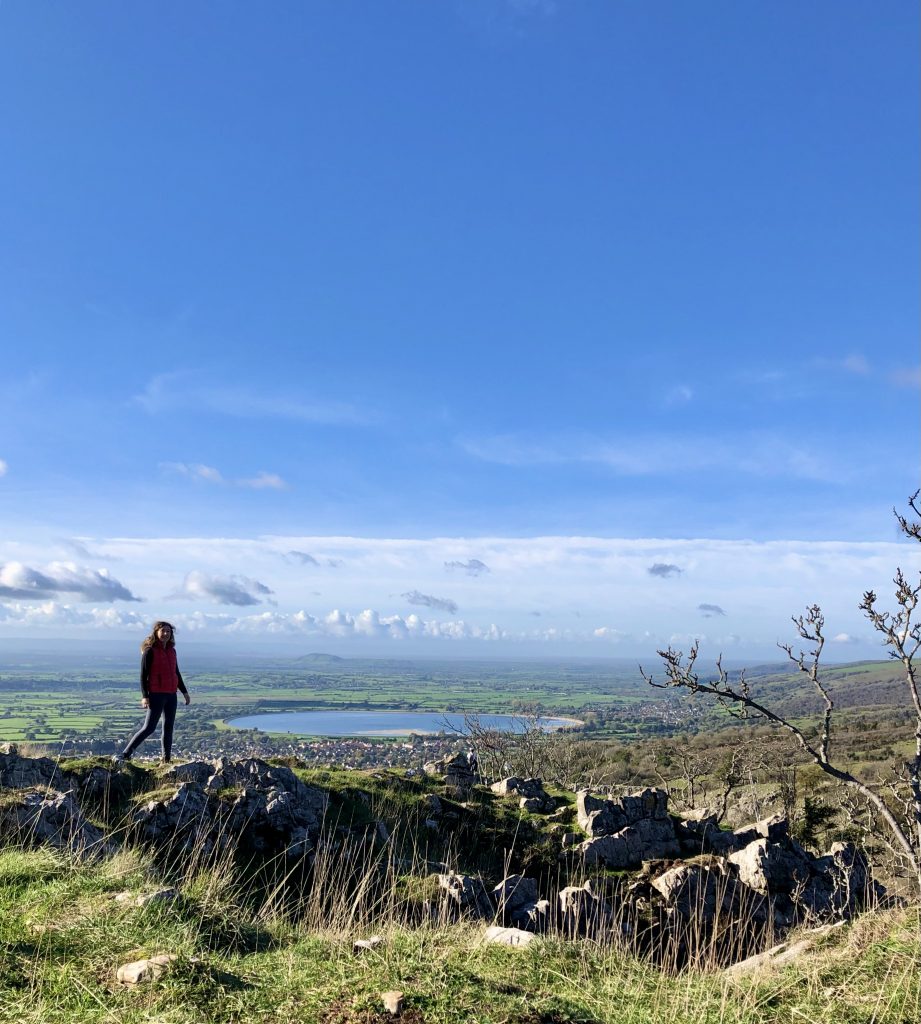
If you want to find out more about walking at Cheddar Gorge, click here to see our complete guide and walking route. The views from the top are incredible.
7. Visit the Witch at Wookey Hole Caves
If you’re feeling more adventerous, Wookey Hole is just 2 miles outside of Wells. It is a fun day out for families visiting Somerset. There are so many things to see and do at Wookey Hole beside the caves, including adventure golf, a cave diving museum, Dinosaur Grove, the Mill, a 4D cinema and vintage arcade games. During the weekends and school holidays you can also see the Wookey Hole Circus show. To find out more and purchase tickets, click here.
8. Ebbor Gorge

If you’re looking for a country walk with stunning views, Ebbor Gorge is an ideal spot. Known as the “Mini Cheddar Gorge” it is just a couple of miles from Wells city centre. Despite being less well-known and smaller than Cheddar Gorge, it is less touristy and a really lovely spot for a walk. Ebbor Gorge Ebbor Gorge is a designated Site of Special Scientific Interest (SSSI) and was donated to the National Trust in 1967. It is now managed by Natural England as a national nature reserve.
Ebbor Gorge is free to visit and free parking.
The area has many caves which were once inhabited by neolithic people. Flint tools found in these caves from that period are displayed in the Wells and Mendip Museum in Wells.
There are three marked walking trails of different lengths, the shortest of which is suitable for wheelchair users. It is particularly lovely place to walk in May when the area is covered in Bluebells.
How to get to Wells
Wells is in the county of Somerset and is situated 21 miles South-East of Weston-super-Mare, 22 miles South of Bristol, 20 miles South-West of Bath and 6 miles North-East of Glastonbury. Travel time from Bristol and Bath are approximately 40 minutes. Wells is a great place to stop-off on your way down to Devon, Cornwall, or Dorset. It is an easy detour off the M5.
By Car:
Coming from M5 North – take M4, M32, A361, A371
From M5 South – take A303, A36, A361, A371
From South East – take A303, A36, A361, A371
By Train:
The nearest railway station is Castle Cary from which there are direct services to London Paddington and the West Country. The station is about 13 miles from Wells. Taxis are available at Castle Cary railway station.
By Bus:
There are regular bus services to and from Wells from Bristol (No. 376), Bath (No. 173) and Shepton Mallet (No. 161 & 174).
By Coach:
The Coach Park is located in Princes Road, BA5 2DT
Where to park in Wells
There are a few Pay and Display car Parks in Wells which are within walking distance from the town centre. We parked next to Waitrose (BA5 2PJ) in the Whiting Way Long Stay Car Park which is a 5-minute walk to the Cathedral. We paid £4.30 for 4 hours. Other options include:
Union Street Car Park, BA5 2PU
Tucker Street Car Park, BA5 2HG
Princes Road Car Park, BA5 2DT
Other things to see in Wells, Somerset
Wells Carnival
Visit Wells in November and see the spectacular Guy Fawkes Carnival.
The Somerset Carnivals are one of the largest illuminated processions in the world.
Spectators line the street as the brightly decorated carnival floats, dancers, musicians and bands navigate the medieval streets of Wells.
The Somerset County Carnivals are one of the most spectacular events in the South West. We highly recommend going because it is an incredible evening out.
The Square
The Square is a soft play centre in Wells, perfect when the weather isn’t playing ball. It’s suitable for children under the age of ten, and ideal for pre-school children.
Places to Visit near Wells
Bath
The beautiful city of Bath is a must-visit for any itinerary to the West Country. Bath is a UNESCO World Heritage Site and has so many historic places to visit. There is the Roman Baths, Bath Abbey, Pulteney Bridge, the Royal Crescent, Bath Thermae Spa and Sally Lunn’s Historic Eating House for a bun!
Bath is surrounded by National Trust Sites and beautiful countryside. A perfect place for a walk.
Glastonbury
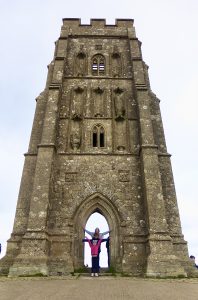 A short 15-minute drive from the city of Wells is Glastonbury, famous for its music festival and historic Tor. Glastonbury is a great place to visit for the day. Highlights include Glastonbury Abbey, Tor, museums and quirky high street shops. We recommend a visit if you’re interested in history, it is a town steeped in myths and legends. Click here for our Glastonbury Tor Circular Walk.
A short 15-minute drive from the city of Wells is Glastonbury, famous for its music festival and historic Tor. Glastonbury is a great place to visit for the day. Highlights include Glastonbury Abbey, Tor, museums and quirky high street shops. We recommend a visit if you’re interested in history, it is a town steeped in myths and legends. Click here for our Glastonbury Tor Circular Walk.
Bristol
 Bristol is the largest city in the South West. It has plenty of green spaces, amazing eateries, a vibrant waterfront area and so much to see and do. Top things to see in Bristol are Clifton Suspension Bridge, the harbourside, Bristol Cathedral, the SS Great Britain, endless museums and galleries, shops and markets. A couple of miles from the city centre is Ashton Court Estate, a country park and mansion and home to the world-famous Balloon Fiesta. This 4-day event is held in August every year.
Bristol is the largest city in the South West. It has plenty of green spaces, amazing eateries, a vibrant waterfront area and so much to see and do. Top things to see in Bristol are Clifton Suspension Bridge, the harbourside, Bristol Cathedral, the SS Great Britain, endless museums and galleries, shops and markets. A couple of miles from the city centre is Ashton Court Estate, a country park and mansion and home to the world-famous Balloon Fiesta. This 4-day event is held in August every year.
Blaise Castle Estate, in North Bristol, is excellent for families – click here for our Blaise Castle Circular Walk.
The Cotswolds
If you are looking to escape the city and explore some of Britain’s prettiest villages and countryside, then a visit to The Cotswolds is the place for you. The Cotswolds are situated north of Wells in an area of outstanding natural beauty (AONB). Stretching across the beautiful counties of Somerset, Gloucestershire, Wiltshire, Oxfordshire, Worcestershire and Warwickshire it covers almost 800 square miles. Here you will find quintessentially English villages defined by the golden-coloured stone, rolling hills: the ‘Wolds’, country houses and palaces, vibrant market towns and an abundance of country walks.
Castle Combe is often called the Prettiest village in England’. Click here for our Castle Combe Circular Walk.
Somerset Family Adventures is a free online resource. If you enjoyed this blog post and found it helpful, you can say thanks and show your support by buying me a coffee. Thanks so much! You can also sign up to our newsletter to be the first to hear of our new walks and days out.
Share this post with your friends and family, and follow us on our social media. Feel free to tag us in your photos if one of my posts has inspired you to visit.
Follow us on social media
Disclaimer: Whilst we endeavour to provide accurate information, please always check the details with the venue before you leave in case there are any changes or closures. If you have any more suggestions for family-friendly days out in Somerset, we’d love to hear from you!
Share this post: on Twitter on Facebook
